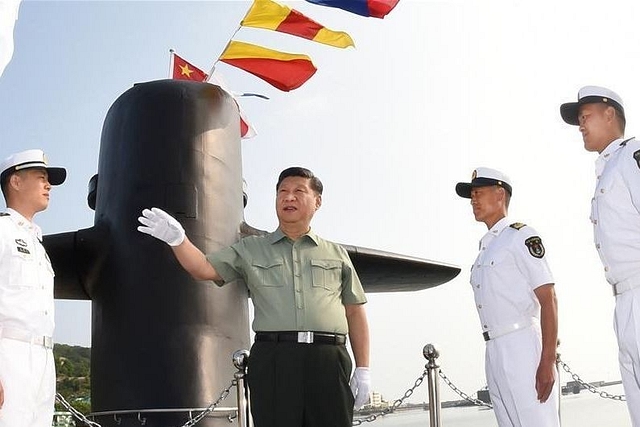
After Ladakh, Bad News For China In The Indian Ocean: Maldives Signs Defence Pact With The US, India Kept In The Loop
The defence pact between the Maldives and the US is a major blow to Beijing’s maritime ambitions in the Indian Ocean as it further cements the island nation’s place in the New Delhi-led security architecture in the region.
In what has come as a bad news for China’s maritime ambitions in the Indian Ocean, the Maldives has signed a defence and security agreement with the US, and the two nations kept India, a defence partner for both, in the loop.
Before the current government in the Maldives came to power in late 2018, China had managed to pull the nation of nearly 1,200 islands into its influence, a development that had made India uncomfortable given its security implications.
Under the regime of President Abdulla Yameen between 2013 and 2018, the Maldives had forged very close ties with China — signed up for the Belt and Road Initiative, a programme opposed by New Delhi; took billions in loans, pushing the country into Beijing’s debt trap; appeared inclined towards Chinese presence on strategically-located islands straddling major sea lanes of communication.
Before 2012, China didn’t even have an embassy in the Maldives. Rise in China’s profile in Male came amid its growing interest in the Indian Ocean. The forays of the People’s Liberation Army Navy in the Indian Ocean grew during this period, China built an overseas base in Djibouti the western Indian Ocean, took over the Sri Lankan port of Humbantota after pushing Colombo into its debt trap.
China saw the Maldives as an outpost in the Indian Ocean, one that could be turned into a military base one day to meet its ambitions in the region.
China's President Xi Jinping visited the Maldives in late 2014, signing multiple deals and promising financial assistance for many more.
Taking pages from the Chinese Communist Party playbook, Yameen jailed the opposition and cracked down on dissent. In 2018, he imposed an emergency and was likely to postpone the upcoming election or rig it in his favour.
The political and strategic situation worsened to a point where India considered an armed intervention in the Maldives. But some strong-worded warnings and diplomacy from New Delhi worked in time, ensuring a free and fair election in late 2018 and bringing the joint opposition group to power in Male.
The new government in Male restored the country’s “India first” foreign and security policy, and reached out to New Delhi for financial help. India’s financial assistance to the Maldives, including loans and grants, has exceeded $2 billion.
While much of Chinese influence in Male ended with a change of guard in 2018, the new development — the US-Maldives defence pact — is a major blow to Beijing’s maritime ambitions in the Indian Ocean as it further cements the Maldive’s place in the New Delhi-led security architecture in the region.
The US and the Maldives, multiple media reports have said, kept India in the loop as they worked on the agreement and signed it. New Delhi was also shown a copy of the two page document signed by the two sides.
When the Maldives and the US were inching closer to signing a defence pact (a Status of Forces Agreement) in 2013, India had opposed the idea. The Maldives and the US had then decided not to go through with the agreement.
To put it bluntly, this defence and security agreement between the Maldives and the US was signed with India’s approval, and this reaffirms India’s primacy.
The agreement and India’s support for it signals where the Maldives stands on issues such as maritime security in the Indian Ocean and the Indo-Pacific.
It also suggests that amid growing Chinese aggression in the Himalayas, India is willing to hurt Chinese interests in the Indian Ocean by allowing greater US role in the region, something it was not very comfortable with some years ago.